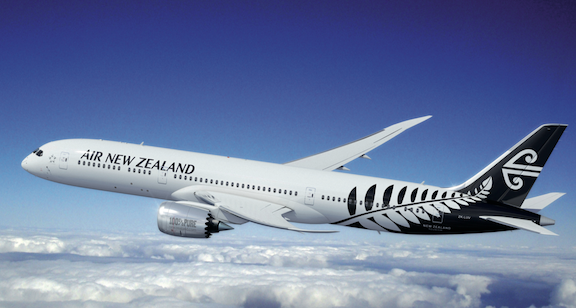
Hey Air New Zealand…you’re finally going to have a little competition!
(Imagine me sticking out my tongue at them)
You see, I have very mixed emotions concerning New Zealand’s flag carrier. Air New Zealand has a great onboard product in business class, an innovative Sky Couch, and even had a good economy product — I think my Hong Kong to London flight on NZ several years ago remains the best economy class flight I have ever taken.
But let’s make one thing clear — for the last few years Air New Zealand has been a terrible Star Alliance partner. While not an explicit guarantee of Star Alliance membership, the implicit bargain to consumers is that no matter what Star Alliance carrier you fly, you can collect points in one loyalty program and use those points to travel not just on that carrier but on carriers across the Star Alliance network.
For the most part, that is true and Star Alliance remains an incredible partnership of 28 airlines that have tremendously benefited customers over the last 18 years. But there are a few who “don’t like to play by the rules” and Air New Zealand is one of them, at least when it comes to transpacific award space. For the last three years, we have seen zero (not a handful, but zero) award seats in business class on any longhaul flight between Auckland and San Francisco, Los Angeles, or Vancouver for any Star Alliance loyalty program beyond Air New Zealand’s own.
And on the one hand, can you blame them? Once Qantas pulled out of the LA – Auckland market, Air New Zealand had no competition to North America and exploited that through higher priced business fares (you know, the way the market is supposed to work) and no award seats. But that’s not being very “neighbor” like.
But this will change next year when Air New Zealand will face fresh competition from American Airlines in LA and United Airlines in San Francisco on its bread and butter routes.
At the very least, those with American or United miles will now have access to business class, even if it costs and arm and a leg (a “standard” award) which is an immediate victory for those tried of traveling via Asia or Australia to get to New Zealand using miles.
But might it also mean less-crowded Air New Zealand flights and perhaps the return of award space in business class on Air New Zealand? That may be a stretch, but here’s to hoping.
For now, I am just happy that Air New Zealand will not be the only player in town.




Matt – I think that sums up my sentiment pretty nicely too! In early 2012 I managed to find a business class award YVR-AKL for September travel that year, but that was my last positive experience with NZ awards. Since then it’s been a big fat NO!; even on trans-Tasman routes where business class awards were once plentiful.
As much as I love the inflight experience, I really hope the new competition gives the airline the kick in the pants they deserve. As a customer, I feel like I’ve been on the receiving end of their treatment for many years. Perhaps I’d be a little less aggrieved if they had at least made a token effort to cooperate with *A redemptions trans-Pacific: is the effect on their bottom line of releasing 1-2 seats per flight on Tuesdays and Wednesdays going to be that catastrophic?!
So here’s hoping there’s enough of an affect to prompt them to be a little more reasonable with award space. And as you say, at least there’s a fall back now of standard award rates. Standard award rates vs 36+ hours through Asia is a compromise I’m willing to consider!
The only time I was able to fly ANZ J was using the old DM 110K NA-S. Pacific award. In order to fly ANZ though it was PVG-AKL-NRT and flew ANA for the other segments. Never saw ANZ open J awards NA-AKL. Never once. That’s what happens when you got a headlock on business – you can do pretty much what you like. Like Henry Ford’s any color offer – All Black (pun intended).
@Steve – Methinks the only routes available in NZ J are PVG-AKL-PVG. They don’t even release any award space on their “newer” routes like AKL-EZE/SIN/IAH-AKL at all. Not even Y.
@Joel: I was fortunate to get the AKL-NRT; the service and food was much better than on the PVG-AKL segment. The mainly Chinese cabin crew out of PVG were rushed and couldn’t communicate well in English.